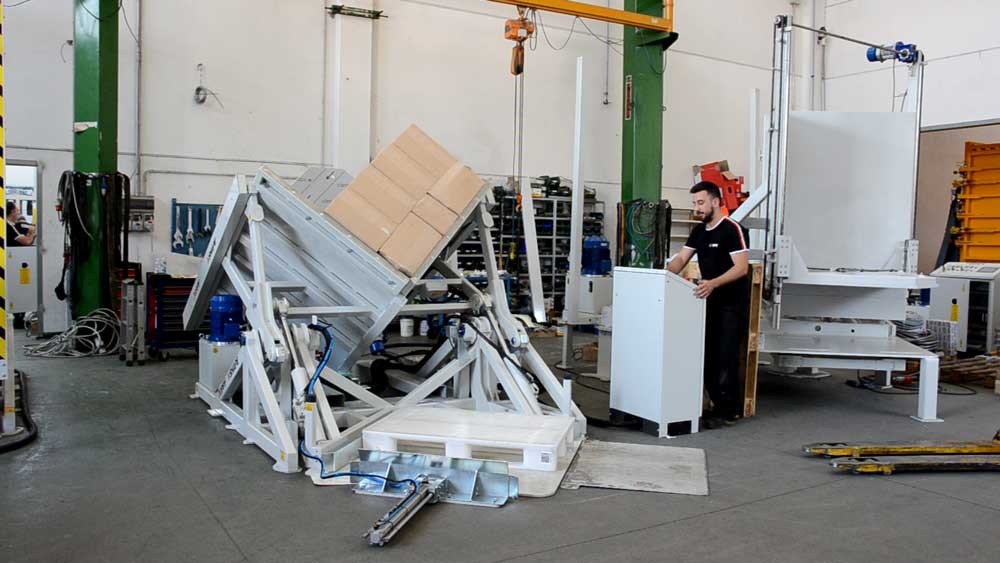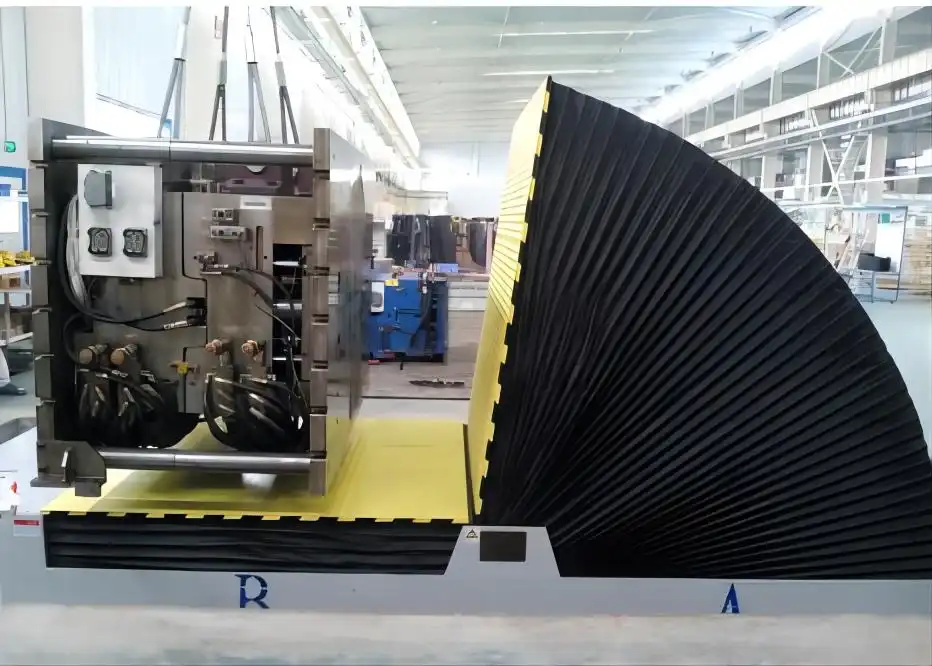How to Maximize the Lifespan of Your Pallet Inverter
Pallet inverters are indispensable assets in modern warehousing and manufacturing, streamlining material handling and boosting operational efficiency. To maximize the lifespan of your pallet inverter, implementing a robust maintenance strategy that encompasses regular checks, employee training, and proactive troubleshooting is crucial. Just like any sophisticated machinery, a pallet inverter requires consistent care and attention to ensure it operates reliably for years to come, safeguarding your investment and productivity.
Investing in a pallet inverter represents a significant capital expenditure for businesses aiming to optimize their material handling processes. Ensuring these machines operate at peak performance for as long as possible is not just about avoiding costly replacements; it’s about maximizing your return on investment and maintaining consistent operational efficiency. A proactive approach to maintenance, coupled with operator best practices, is the key to extending the lifespan of your pallet inverter and safeguarding your bottom line.
The Foundation: Regular and Preventative Maintenance
Think of your pallet inverter as a high-performance vehicle; neglecting routine servicing will inevitably lead to breakdowns and decreased performance. Regular maintenance is the cornerstone of longevity for any complex machinery, and pallet inverters are no exception. A consistent maintenance schedule minimizes wear and tear, identifies potential issues before they escalate, and ensures the machine operates within its designed parameters.
Lubrication: The Lifeblood of Smooth Operation
Friction is a primary enemy of machinery lifespan. Pallet inverters have numerous moving parts, including clamp slides, rack and pinion mechanisms, and various bearings and axles. Regular lubrication significantly reduces friction, preventing premature wear and tear on these critical components. Using high-quality, long-life grease on all lubrication points – including wheels, axles, and grease fittings – is a fundamental preventative measure.
Cleaning: Maintaining a Healthy Operating Environment
Warehouses can be dusty and debris-filled environments. Accumulated dirt and debris can infiltrate the sensitive mechanisms of a pallet inverter, causing operational inefficiencies and potential damage. Regular cleaning is essential. This includes removing loose debris with compressed air (always wearing safety glasses when using compressed air), and wiping down accessible surfaces. Special attention should be given to cleaning around moving parts and any areas prone to accumulation. A clean machine runs cooler, operates smoother, and lasts longer.
Inspection: Your Proactive Defense Against Downtime
Regular inspections are your eyes and ears when it comes to identifying potential problems before they lead to downtime. A comprehensive inspection routine should be implemented, covering several key areas:

- Bolt Tightness: Vibration from operation can loosen bolts over time. Regularly check and tighten all bolts on the machine to maintain structural integrity and prevent component misalignment.
- Hydraulic System Scrutiny: The hydraulic system is the powerhouse of many pallet inverters. Inspect hydraulic hoses and fittings for signs of wear, abrasions, leaks, and bulges. Check fluid levels regularly and inspect the hydraulic filter and pump gauge. A reading in the “red” zone typically indicates filter replacement is needed.
- Turnover Cylinder Check: For models with turnover cylinders, inspect them for wear, damage, and sufficient lubrication. Ensure the gear and gear track have adequate grease for smooth operation.
- Moving Parts Assessment: During functionality testing, observe all moving parts for any unusual noises, jerky movements, or signs of wear. Address any anomalies immediately.
- Light Curtain Verification: If your inverter is equipped with a light curtain safety system, regularly verify its functionality. Ensure all indicator lights are active and that the system responds correctly to interruptions.
Calibration: Ensuring Precision and Safety
Calibration might not be a daily task, but it’s a vital aspect of long-term maintenance. Pallet inverters are designed to rotate loads safely and accurately. Over time, and with heavy use, calibration can drift. Regular calibration checks ensure the inverter continues to function as intended, maintaining both operational efficiency and safety.Employee Training: Investing in Safe and Efficient Operation
Even the most meticulously maintained machine can suffer from damage and reduced lifespan if operated incorrectly. Comprehensive employee training is paramount to maximizing the lifespan of your pallet inverter. Well-trained operators are not only safer but also contribute significantly to the longevity of the equipment.
Safety First: A Culture of Responsible Operation
Training must emphasize safety protocols above all else. Employees need to be thoroughly trained on:
- Safe Operating Procedures: Understanding the correct sequence of operations, load limits, and emergency procedures, including the location and function of emergency shut-off switches.
- Hazard Identification and Mitigation: Teaching employees to recognize potential hazards associated with pallet inverter operation and how to mitigate risks effectively.
- Personal Protective Equipment (PPE): Ensuring employees understand the importance of and consistently use required PPE, such as safety glasses and appropriate footwear.
- Lockout/Tagout Procedures: Implementing and enforcing strict lockout/tagout procedures during maintenance and repair work to prevent accidental machine activation.
Operational Best Practices: Extending Machine Life Through Skill
Beyond safety, training should cover operational best practices that contribute to machine longevity: - Correct Pallet Size and Product Securing: Training operators on how to select the correct pallet size for the inverter and how to properly secure products to minimize the risk of product damage and machine strain.
- Avoiding Overloading: Strictly adhering to the inverter’s weight capacity is crucial. Overloading puts undue stress on the machine’s components, leading to accelerated wear and potential failures.
- Smooth and Controlled Operation: Encouraging smooth, controlled operation, avoiding jerky movements and abrupt stops, which can stress mechanical and hydraulic systems.
- Understanding Machine Limitations: Operators should be trained on the limitations of the pallet inverter and understand situations where its use might be inappropriate or unsafe, such as operating on slopes or uneven surfaces.
Addressing Common Issues Promptly
Even with diligent maintenance, issues can arise. Knowing how to identify and address common problems quickly is crucial to preventing minor issues from morphing into major, costly repairs.
Troubleshooting Common Problems:
- Hydraulic System Failures: Recognize signs of hydraulic system issues, such as slow or erratic movement, leaks, or unusual noises. Consult qualified technicians for diagnosis and repair.
- Motor Failures: Motor malfunctions can manifest as a complete cessation of operation or unusual noises. Promptly investigate motor issues and seek professional repair or replacement.
- Electrical Issues: Electrical problems might present as erratic operation, control panel malfunctions, or complete power loss. Electrical troubleshooting should be performed by qualified personnel.
- Failure to Pump or Lower: This is a frequent issue often related to the lowering valve or air in the hydraulic system. Operators should be trained on basic troubleshooting steps like bleeding the hydraulic circuit or adjusting the lowering valve screw.
The Importance of Timely Repairs:
Ignoring even seemingly minor issues can have a cascading effect, leading to more significant damage and increased repair costs down the line. A proactive approach to repairs is essential. Establish a system for reporting malfunctions promptly and ensure that repairs are carried out by qualified technicians in a timely manner. Consider establishing a relationship with a reputable service provider, like Toppy Service and Support, who offer on-site repairs, maintenance, and remote support.Monitoring Performance: Data-Driven Optimization
In today’s data-driven environment, monitoring the performance of your pallet inverter provides valuable insights for optimizing maintenance schedules and identifying potential issues early.
Key Performance Metrics to Track:
- Productivity: Track throughput and cycle times to identify any decreases in performance that might signal underlying problems.
- Safety Incidents: Monitor safety-related incidents or near misses associated with pallet inverter operation to identify areas for improved training or safety procedures.
- Maintenance Frequency and Costs: Track maintenance frequency and costs to identify trends and optimize your maintenance schedule. Unusually frequent or costly repairs might indicate a need for more proactive preventative maintenance or operator retraining.
- Downtime: Closely monitor downtime associated with pallet inverter malfunctions. Analyze downtime events to identify root causes and implement preventative measures.
By systematically tracking these metrics, you can create a proactive maintenance strategy that not only maximizes the lifespan of your pallet inverter but also optimizes its efficiency and safety, contributing to a more productive and profitable operation.Conclusion: A Long-Term Investment in Efficiency and Reliability
Maximizing the lifespan of your pallet inverter is not just about saving on replacement costs; it’s about ensuring consistent operational efficiency, minimizing downtime, and fostering a safe working environment. By implementing a comprehensive maintenance program that encompasses regular inspections, lubrication, cleaning, employee training, and proactive troubleshooting, businesses can safeguard their investment and reap the benefits of reliable pallet inverter operation for years to come. Think of it as a holistic approach – encompassing machine care, operator training, and data-driven insights – all working in concert to extend the lifespan and enhance the value of this critical piece of warehouse equipment. Investing in proactive maintenance is, ultimately, investing in the long-term success and efficiency of your operations.

